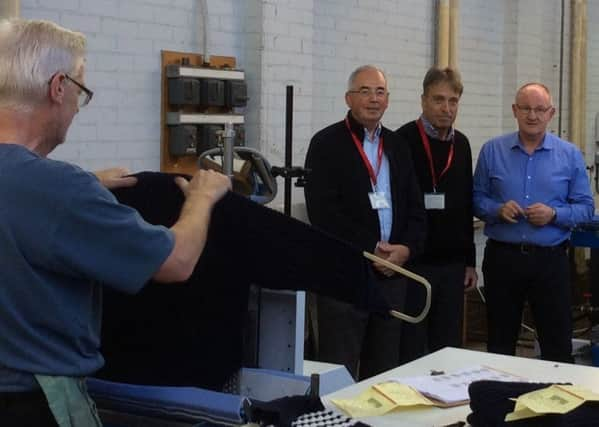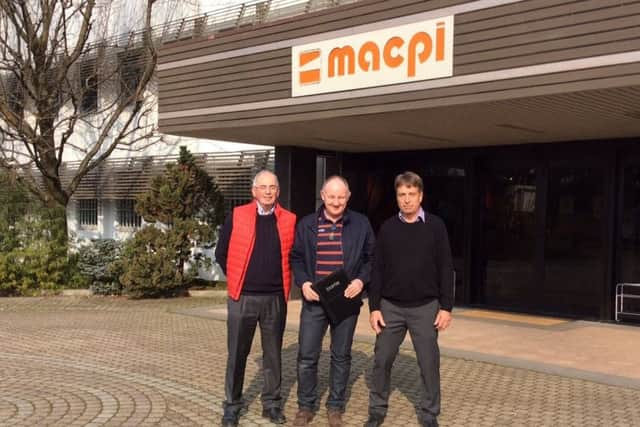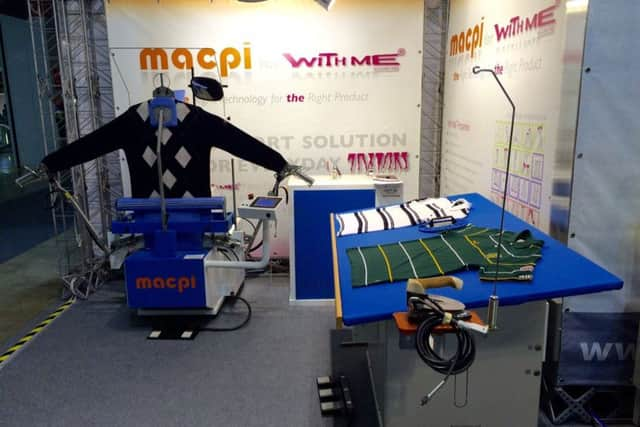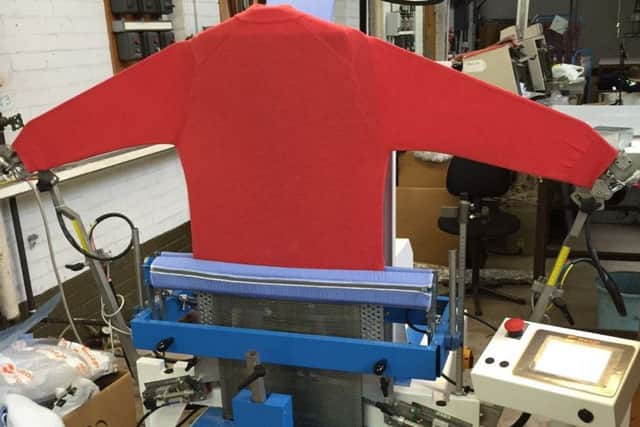Pioneering new knitwear press trials in Hawick factories


A joint project between bosses at Hawick’s Barrie Knitwear, Italian machinery maker Macpi and English firm Textile Developments,has created a new three-dimensional concept for pressing quality knitwear, replacing the iconic Paris press which has served the mills for over 50 years.
The collaboration, which came about by a chance meeting at an industry exhibition almost two years ago, has seen several prototypes shipped back and forth between Hawick and Italy, each installed and tested then shipped back with a list of required modifications.
Advertisement
Hide AdAdvertisement
Hide AdIn January, Macpi delivered the first definitive machine to Barrie Knitwear, which has since installed one more, followed by further new machines at both William Lockie and Scott and Charters this month.


The new machine, codenamed Macpi 314-41, is engineered to be more streamlined and productive than its predecessor, the iconic Paris press.
This replacement is computer-controlled and has finite adjustments to its steam and airblowing and tensioning features.
The 314.41 is also capable of pressing a much wider range of styles and sizes.
Advertisement
Hide AdAdvertisement
Hide AdProduct development consultant for textile developments Robin Ree said: “With the likes of Pringle, Lyle and Scott and most recently Peter Scott all closing their manufacturing facilities, the second-hand market provided the remaining factories with plenty of spares, but over recent years, the need for vital spare parts to keep obsolete machinery going had reached crisis point.


“Thanks to the inventive persistence of everyone involved, a viable alternative piece of equipment has evolved out of a collaboration that looks very much as though it will benefit the wider market for finishing quality knitwear worldwide.”
With an industry in decline the difficulty in obtaining spare parts for obsolete equipment was in part resolved by cannibalising redundant equipment, as the UK and in particular Scottish factories closed in the 90s onwards.
Mr Ree added: “The new machines currently being delivered into Scotland are resolving a serious production problem and are the culmination of a successful collaboration between several different industry partners drawn together by an experienced consultant.
Advertisement
Hide AdAdvertisement
Hide Ad“The burning questions was ‘how do we bring cashmere knitted garment pressing into the 21st century but at the same time maintain the essential quality control while increasing productivity?’


“Barrie Knitwear and Johnstons of Elgin in Hawick each recognised that demand for their high end products was gradually increasing and yet the pool of experienced operators was dwindling. The machinery they were using had become outdated and unreliable so urgent action was needed or serious production bottlenecks would be the result.”
Originally designed for the first press operation in the manufacturing cycle the Paris press was used to set the garment to its correct size after knitting, washing to degrease then milling and drying before the attachment of collars and other accessories, there is a second stage operation known as final press which has already been the subject of an earlier successful development.
The press has remained almost unchanged for 50 years, until the creation of this new product.